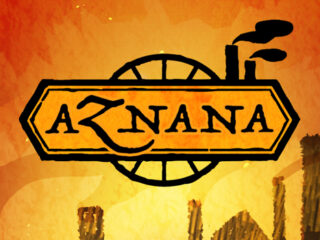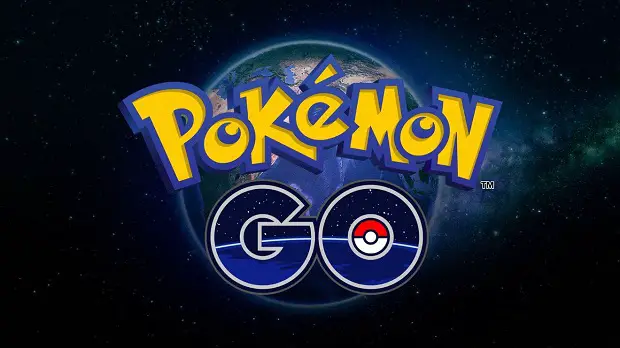 For years, all the gaming world wanted was to play Nintendo games on a computer or mobile device. Thanks to Niantic, we finally got that opportunity this week with the much-anticipated launch of Pokemon Go for Android.
For years, all the gaming world wanted was to play Nintendo games on a computer or mobile device. Thanks to Niantic, we finally got that opportunity this week with the much-anticipated launch of Pokemon Go for Android.
Although plagued with server issues (the developer clearly wasn’t expecting such a rush to the game upon release for some unexplainable reason), the game doesn’t disappoint. Already, pics are flooding the Internet of cartoony Pokemon being found in some very interesting places.
I’ve been playing the game all week as I drove around Arizona between Flagstaff, Phoenix, and Tucson, and this review is based on my experiences. I’ll do my best to provide insight while explaining the mechanics and ignoring the initial server issues that plagued the launch which seem to have mostly cleared up.

A Nintendo Fanboy’s Wet Dream
Pokemon Go is one of the first AR games to see a wide release on Android, with Ingress, one of the most popular Android AR games, also being developed by Niantic. Although Ingress is about two warring factions of hackers, you can definitely see its influence on Pokemon Go.
Like every other Pokemon game you’ve ever played (except Pokemon Snap on N64), the object of Pokemon Go is to collect, train, evolve, and battle little mythical creatures based on real-life animals. The difference between this game and others is you’ll be searching in the real world using your phone’s GPS, camera, and gyroscope.
As advertised, water-type Pokemon can be found in near rivers, lakes, and oceans, while fire-type can be found in the desert. Living in AZ, most of the Pokemon in my state are fire, ground, poison, and fighting.
Normal Pokemon like Pidgey, Rattata, and Geodude are relatively easy to catch, appearing with a green circle when capturing. These Pokemon are the ones you’ll typically see near you upon login. Rare and/or evolved Pokemon like Pikachu, Arcanine, and Flareon appear with a yellow or orange circle. The pokedex currently stops at 136, so there’s no Mewtwo yet, but it’s only a matter of time before more are added.

Gotta Catch Em All
To catch a Pokemon, all you need to do is throw a pokeball at them, which gets more difficult with higher level and rares. Anything orange will move around often, and even if you wait until the circle is as small as possible before tossing, you’ll likely go through 5 or more pokeballs before catching them, assuming you manage to hit them each time.
Nearby Pokemon are shown in the bottom right of the screen, each with one, two, or three steps approximating distance to them. They don’t indicate direction, however, so catching rare Pokemon is a difficult feat, as they’re often 3 steps away. The only way to figure out which direction is to start walking at least a block away. By my best estimates, each step is equivalent to approximately 100 yards, but I was too lazy to catch anything beyond two steps.
In addition to Pokemon, you can also check out various points of interest (called pokestops) throughout your town and the world. You can tap the pokestop once it appears on your map, but can only interact with it once you’re within proximate distance (meaning it’s within the circle surrounding your avatar). It took several pokestops before I realized interacting with it meant tapping it and swiping right or left to draw out a cache of items, ranging from potions and pokeballs to eggs and incense.
Eggs can be hatched for more Pokemon by putting them in your incubator and walking the specified distance. Eggs with a 2km or 5km (1.25-3 miles) distance are typically normal, while rare Pokemon can be obtained from 10km (6.25 miles) eggs. Driving won’t work, so you’ll need to either walk, jog, or bike with the app open on your phone to get the eggs. Make sure you disable your phone’s power saver mode or you’ll find yourself exercising for no reason.

Gotta Kill Them All
Once you reach level 5, you can select your team and start battling your Pokemon in the various gyms, also located at various points of interest around the world. If a gym is controlled by an opposing team, you must battle all occupying Pokemon (up to 4) with one of yours in order to take control. If your team controls it, you can add one of your Pokemon to strengthen the defenses and gain XP and gold.
Battles in Pokemon Go are real-time in a 3D stadium. By swiping up and down you can dodge incoming attacks, while tapping your opponent executes your Pokemon’s light attack and holding your finger on them performs a stronger attack. The same rock-paper-scissor dynamic from every Pokemon game applies here, so water douses fire, rock, and ground, electric beats water and air, etc.
Smart teams vary the Pokemon types at each stop, so you’ll need a high CP (combat power) to win. Even if you don’t make it through the entire gauntlet, you can still gain XP and gold for each one you defeat.
It’s a Shame It’s Flawed
Overall, Pokemon Go is a solid effort from Niantic, but it’s not without its flaws. First off are the server issues the entire Internet (especially the Play Store) is in a fury about. In the U.S., the game only works reliably late at night, which is a terrible time for people (especially women and children) to be wandering through random neighborhoods.
Normally I wouldn’t be as upset about server issues, except it can be infuriating when you’ve walked several miles to take over a gym only to have the game freeze on the last hit (happened to me twice) or you use a timed item like incense to attract Pokemon to your location only to have the game crash and lose your item that costs real time, money, and effort to replace.
I also found several pokestops and gyms in rather inconvenient (even downright dangerous) places. In Tucson, AZ, for example, a gym was located in the median of a busy street in front of a strip club, while several points of interest were located in roundabouts. I even found myself creeping up on the Arizona DPS Tucson headquarters late at night to interact with a pokestop.
Also if you want to collect them all, you’re going to have to travel, but it’s difficult to plan a trip around broken servers, rendering the point moot. In the past week, I traveled over 500 miles (unrelated to the game), making stops throughout Arizona (specifically for the game), including Tucson, Phoenix, Flagstaff, Casa Grande, Sedona, Prescott, and several stops in between. Despite differing environments, the Pokemon didn’t differ much around my home state, and there’s currently no way to trade (although Niantic has hinted at this feature being added in the future).
Thus far, none of the legendary birds (Zapdos, Articuno, and Moltres) have been found, despite them being the mascots for each team. Rumors have circulated online these will likely be event-exclusive, mirroring group events in Ingress, but it’s yet to be officially confirmed.
Overall, Pokemon Go is a solid game based on one of the most popular franchises in video game history, but it’s not without its flaws. Server issues aside, you’ll find yourself fighting your phone and real-world obstacles in order to play. Even if you don’t play, you have to be aware it’s out, because people are using it in their cars, despite the game’s every plea not to do so.
If you’re a diehard Pokemon fanatic, Pokemon Go is a must-play. Otherwise, you may find Ingress or Life of Crime more suited to your tastes for an Android AR game.
Hardcore?
Yeah...
Despite its flaws, Pokemon Go is a great AR game sure to appease Pokemon fans young and old.


























